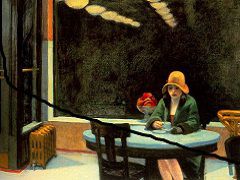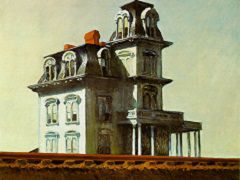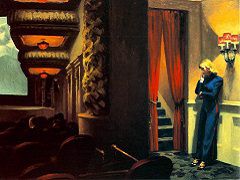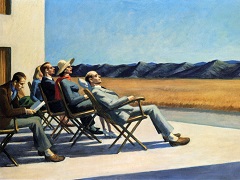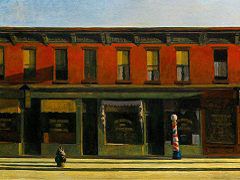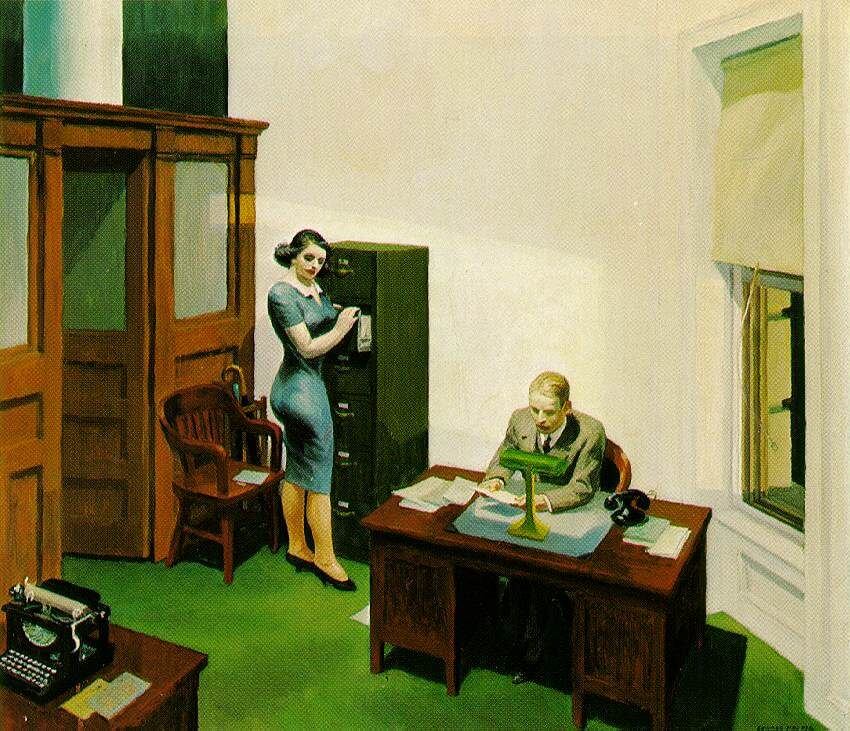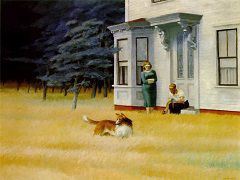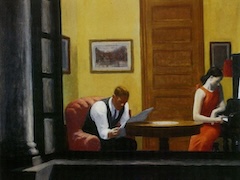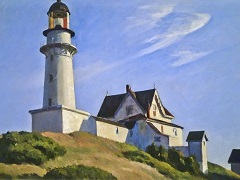Stairway at 48 rue de Lille, Paris 1906 by Edward Hopper
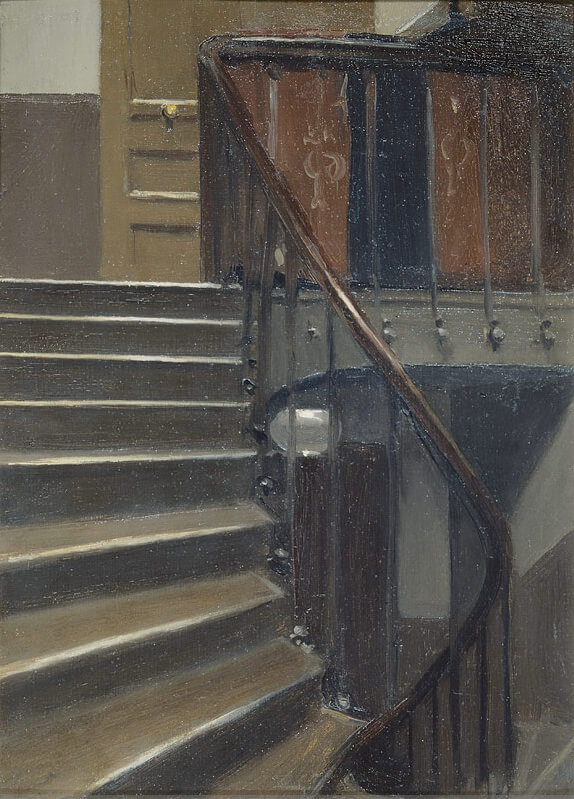
Edward Hopper arrived in Paris for the first time in October 1906, coincidentally a day after Cezanne died in the south of France. He remembered seeing some of the Paul Cezanne's paintings at the autumn Salon that year, but took nothing from his painting, then or later, and it was partly as a result of keeping this distance that he used to be portrayed as an outsider from modernism. But in this stance Hopper is comparable to some British artists of his time, all of whom moved away independently from Impressionism along a different avenue from the one taken by the beneficiaries of Cezanne.
The possession of painterly skill may not be a necessary condition to becoming an outstanding painter in oils, but when it happens to be there, it certainly counts. Hopper's natural talent for painting remains astonishing, and was evident early in his career, in the small sketch on panel that he made of the stairwell of the Baptist lodging house in the rue de Lille in Paris, where he lived for the eight months of his visit to France in 1906. It seems an unassuming little painting at first glance, but as a technical exercise in the control of colour tones and the depiction of space it is ambitious, and a tour de force. Not only does the realisation work, it also shows the overall joined-up modulation of paint that is characteristic of the French tradition. The unusually powerful character of his paint application can best be described as Hopper was no doubt born with what became this skill, but in the light of his prolonged studentship in New York this quality is most likely to have come also from the study of the paintings of Thomas Eakins, a concern encouraged in him by his teacher Robert Henri, who had studied with a pupil of Eakins. This predilection f or rich paint may also have been re-enforced in Paris by his sight of paintings by Gustave Courbet. It is not known for sure whether the Stairway at 48 rue de Lille, Paris was just a rainy-day painting, or if its dark colouring indicates that it was made soon after his arrival in France, in quick response to artists such as Gustave Courbet. The chiaroscuro of the stairwell, complex in this confined space seen from a bedroom doorway, makes up the perspective within the body of the paint itself, not just with its colour or its drawing. Hopper sought to catch the reflection from the stair treads, not totally successfully as yet, but the space is nevertheless forcefully convincing, and indicates the seriousness of his technical ambitions, here used in relation to a complicated architectural space.


